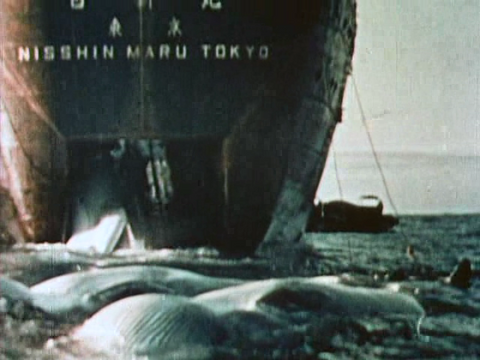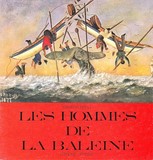
Lynne Sachs retrospective at DCTV features screenings, Q&As, and an interactive workshop.
by Mark Rifkin
LYNNE SACHS: FROM THE OUTSIDE IN
DCTV Firehouse Cinema
87 Lafayette St.
June 7-11
212-966-4510
https://twi-ny.com/2024/06/06/lynne-sachs-from-the-outside-in/
Experimental filmmaker Lynne Sachs took her first video class at DCTV in 1984; she and DCTV Firehouse Cinema are celebrating this fortieth anniversary with “Lynne Sachs: From the Outside In,” a five-day retrospective with seven programs comprising two dozen of her works, from 1983’s Ladies Wear to 2024’s Contractions and the world premiere of We Continue to Speak, from the three-minute The Small Ones (2007) and The Jitters (2024) to the eighty-three-minute Tip of My Tongue (2017). Sachs will be at every program, participating in Q&As and an interactive workshop; among her special guests are Tom Day, Sam Green, Tabitha Jackson, Naeem Mohaiemen, Lizzie Olesker, Accra Shepp, and her brother Ira Sachs.
“I walked into Downtown Community TV (DCTV) in 1984 thinking I needed to take some classes on how to make a documentary film. I was twenty-two years old and open to any possibility, any guidance, and totally impressionable,” Sachs said in a statement. “From that moment on, I learned to challenge every conventional expectation about working with reality. As I continue to explore the connections between the body, the camera, and the materiality of film itself, I reflect on those early experiences that taught me to reflect upon my own relationship to the people, places, and events I continue to witness as a filmmaker.”
The Memphis-born, Brooklyn-based auteur is an open book in her films, melding the personal and the political. In the grainy Ladies Wear, she photographs Ira on the New York City subway as he applies polish to his nails and sneakers. In 2013’s Your Day Is My Night, she documents a group of Chinese immigrants crammed into a closetlike apartment in Chinatown, where they ponder the differences between their lives in America and their native country and wonder if they made the right choice in coming here; there’s a fascinating kind of intervention when a young Puerto Rican woman moves in with them. In The Small Ones, Sachs shares the story of her Hungarian cousin Sandor Lenard, who during WWII in Italy was tasked with “washing, measuring, and cementing the bones of American dead.” His straightforward narration is accompanied by abstract images of war and slow-motion home movies of children at a birthday party. In 2021’s Maya at 24, Sachs depicts her daughter, Maya, at ages six, sixteen, and twenty-four.
Sachs offers a unique perspective of 9/11 in Tornado (2002), her fingers ruffling through ripped paper that floated across to Brooklyn. In the seven-minute Swerve, artist and curator Emmy Catedral, blaqlatinx multidisciplinary artist ray ferreira, director and cinematographer Jeff Preiss, film curator and programmer Inney Prakash, and actor Juliana Sass recite excerpts from Pilipinx poet Paolo Javier’s O.B.B. in a Queens park; words occasionally appear on the screen, including “free emptiness,” “unknown thoroughfare,” and “hum your savage cabbage leaf.” Investigation of a Flame (2001) explores the true story of the Catonsville Nine through archival footage and new interviews, with one member decrying “the obscenity and the insanity” of the US government’s actions, “which are growing more and more obscene and insane.”
“I’ve been in awe of Lynne’s fearlessness and desire to create, make meaning, rip apart, and piece together,” DCTV Firehouse Cinema director of programming Dara Messinger said. “I see her as the epitome of an indelible artist who is driven by curiosity and empathy — not fame, industry demands, or commercial algorithms. And I appreciate her sincere gratitude to her collaborators and to DCTV, honorably looking back but always steps ahead. Good documentary filmmaking cannot happen in a vacuum.”
“I don’t believe that childhood is swathed in innocence,” Sachs writes in e•pis•to•lar•y: Letter to Jean Vigo (2021), which contains footage from January 6 and Peter Brook’s 1963 Lord of the Flies. In The Jitters (2024), she cavorts with her partner, Mark Street, and three pet frogs and a cat. She takes a revealing look at the patriarch of her seemingly ever-expanding family in Film About a Father Who (2020). In And Then We Marched (2017), Sachs speaks with Sophie D., her seven-year-old neighbor, over archival footage of suffragists and shots of the 2017 Women’s March for equality.
Sachs shares her real to-do lists in A Year in Notes and Numbers (2017) while tracking her cholesterol, bone density, weight, glucose level, platelet count, and total protein. In Carolee, Barbara and Gunvor (2018), she visits cutting-edge artists Carolee Schneemann in New Paltz, Barbara Hammer in New York City, and Gunvor Nelson in Sweden. In an essay Sachs wrote about the four-minute 1987 silent short Drawn and Quartered, depicting a naked man and woman divided into four frames, exploring the tacit nature of the human body, Sachs explained how she felt at the film’s San Francisco premiere: “Within those few painful minutes, the crowd went from absolute silence, to raucous laughter, and back to an exquisite quiet. I was shaking.” You can expect all that and more over these five days at DCTV; below is the full schedule.




























